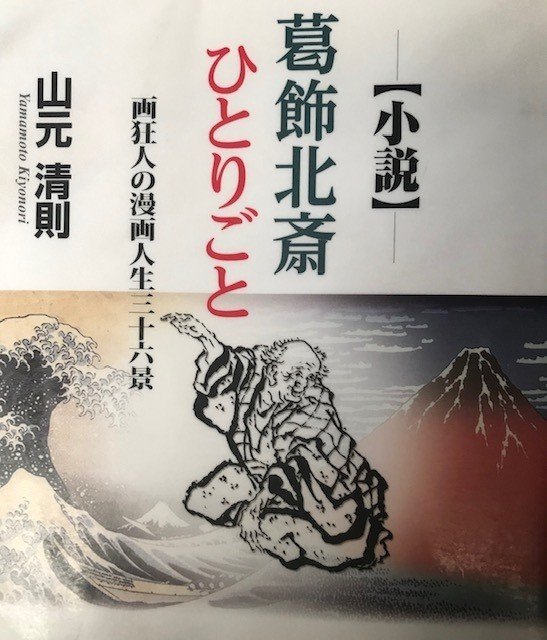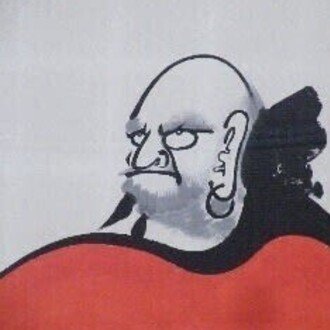
北斎物語には、よく娘「お栄」が登場する。江戸庶民文化が楽しめる。 In the Hokusai story, the daughter "Oh Ei" often appears. Enjoy the culture of Edo people.
新型コロナウィルスでこの春に発動された非常事態宣言中に、安土桃山時代から江戸時代にかけて活躍した絵師を題材にした歴史風俗小説を連読した。その中でも葛飾北斎をテーマにした小説を何冊か楽しませてもらった。
During the state of emergency announced by the new Coronavirus this spring, I read a series of historical customs about an artist who was active from the Azuchi-Momoyama period to the Edo period. Among them, I enjoyed some novels with the theme of Katsushika Hokusai.
そのときに、懐かしく思いだされたのが平成15年に公開された「百日紅(さるすべり)」というアニメーション映画。その映画の新聞広告がひときわ目を惹いた。杉浦日向子さんの代表作漫画「百日紅(さるすべり)」の映画化の広告だった。「百日紅」という漫画を知らない者にはピンとこなかったが、葛飾北斎のという名前で目に止まった。
At that time, one of my favorite memories was an animation movie called "Sarusuberi" that was released in 2003. The newspaper advertisement for the movie caught my eye. It was an advertisement for a movie version of Hinako Sugiura's masterpiece manga, "Sarusuburi." It didn't catch on to those who didn't know the manga "Sarusuberi", but it caught my eye under the name of Hokusai Katsushiga.
主人公は葛飾北斎ではなく娘の「お栄」。そのヒロインの声を杏さんが吹替えを担当。お栄のイメージに杏さんの声が非常に馴染んでいたように思った。ストーリーは、文化十一年の大江戸・両国広小路。そこに住む一人の女絵師・お栄が父北斎や仲間たちと絵を描いて暮らす人情ものがたり。
The protagonist is not the Katsushika Hokusai but the daughter's "Oh-Ei". Ms.An is in charge of dubbing the voice of the heroine. I thought that Ms. An's voice was very familiar with the image of praise. The story is Oedo and Ryogoku Hirokoji, the eleventh year of culture. There is a personality where one female painter, Oh-Ei, who lives there, draws a picture with his father Hokusai and his friends.
葛飾北斎の小説では、必ずと言っていいほど「お栄」が登場し、北斎の身の周りの世話をしながら自ら女絵師「応為(おうい)」として活躍する。作家によって、お栄の存在価値は幾分異なるが、ストーリーづくりには欠かせない存在人物だったのだろう。
In the novel by Katsushika Hokusai, "Oh-Ei" appears almost all the time, and he plays an active part as a female artist "Oui" while taking care of his surroundings. Although the value of Oh-Ei's existence differs depending on the writer, he must have been an indispensable person for story creation.

2005年 朝日新聞に掲載された「百日紅」アニメ映画広告
百日紅の広告頁の最終に「百日紅 見聞録」として江戸庶民の暮らしぶりが書かれていた。それによると「江戸庶民の8割はワンルームの長屋住まい」とあった。当時、江戸の居住区は、3分の2が武家地、6分の1が社寺地、残る6分の1が町人地だったようだ。狭い中で軒を連ねていた住居が長屋。いまでいう集合住宅である。よく時代劇に登場する長屋シーンを見ているので想像はつく。
At the end of the advertising page of Sarusuberi, the life of the common people of Edo was written as "Sarusuberi memoirs". According to it, "80% of Edo people live in a one-room row house". At that time, it seems that two-thirds of the residential areas of Edo were Samurai, one-sixth were shrines and temples, and the other one-sixth was townspeople's land. The houses that lined up the eaves in a small space are row houses. It's a collecting house. I often see the tenement house that appears in historical dramas, so I can imagine.
それに江戸っ子の好きなものといえば「お風呂」。一日2度も入る人が多かったよう。もうひとつ江戸の風物詩といえば「屋台」がある。すしに天ぷら、いなりずしやそば。さらに砂糖などで味付けした水売りも町を練っていたようだ。いまでいう居酒屋のオンパレードである。
Another thing Edokko likes is "bath". It seems that many people entered twice a day. Another stall of Edo is the “street stall”. Sushi, tempura, inarizushi and soba. Furthermore, it seems that water vending with seasonings such as sugar was also involved in the town. It's an izakaya bar on parade.

映画では北斎やお栄の人物像がユニークに描かれていた。そして、江戸時代の暮らしを分かりやすく見せ、興味をそそるように構成されていたように記憶している。
現在も、梶よう子さんの著作の「北斎まんだら」を読んでいる。
In the movie, the portraits of Hokusai and Oh-Ei were uniquely drawn. And I remember that the life of the Edo period was shown in an easy-to-understand manner and was designed to be intriguing.
I am still reading "Hokusai Mandara" written by Yoko Kaji.
レポート / 渡邉雄二 写真 / トップはフリー画像(富嶽三十六景) ・山元清則著書「北斎のひとりごと」
Reported / Photos by Yuji Watanabe / Free photo(Thirty-six views of Mt.Fuji)
"Soliloquy" by Kiyonori Yamamoto
いいなと思ったら応援しよう!

